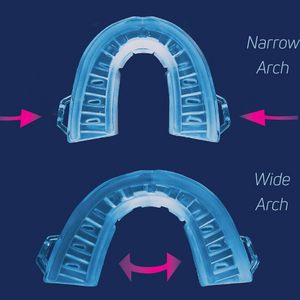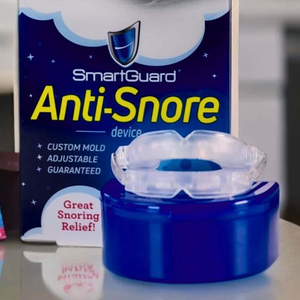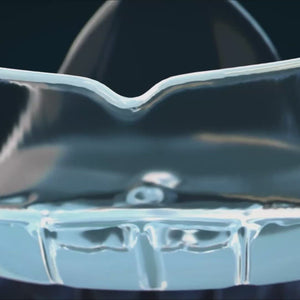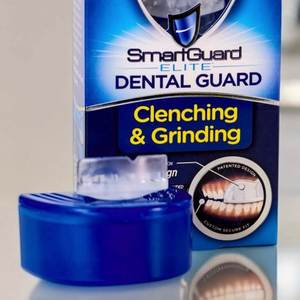Apr 02, 2024
HAVE YOU SEEN YOUR TEETH OCCLUDE? WHAT IS THAT?
Teeth occlusion is the contact between the upper and lower teeth when they close, as occurs during chewing, biting or resting. The chewing or masticatory system involves not only the teeth but also the temporomandibular joint (TMJ) as well as the nerves and muscles of the jaw and teeth. Therefore, tooth contacts should not be looked at in isolation, but in relation to the overall masticatory (chewing) system, including muscles and nerves. Because teeth occlusion involves the jaw, its muscles and nerves, it is highly pertinent in human function. In fact, without proper occlusion, a person’s health is at risk.
The human mouth consists of 32 permanent teeth, which are distributed between the alveolar bone of the maxillary and mandibular arch, both top and bottom. Teeth consist of two parts: the crown, which is visible in the mouth and lies above the gumline of gingival soft tissue, and the roots, which are below the level of the gingiva and in the alveolar bone. The periodontal ligament joins the cementum on the outside of the root and the alveolar bone. This bundle of connective tissue fibers is vital in spreading out the forces that are applied to the underlying bone during the contact of teeth in function.
HOW DOES TEETH OCCLUSION AFFECT YOUR HEALTH?
Teeth occlusion can have an impact on your oral health and eventually your overall health. When teeth are properly aligned, it will be easier to clean and less likely to accumulate plaque and tartar, reducing the risk of tooth decay, gum disease, and other oral health problems, not to mention the ability to eat a variety of foods for optimal nutrition.
Malocclusion of the teeth, which is when your teeth are misaligned, can lead to oral health complications if left untreated. Malocclusion can cause one to clench and grind their teeth (bruxism), which can result in the loss of enamel, causing teeth to become more sensitive and bringing the eventual need for root canal procedures and the expense of crowns.
HOW DO YOU KNOW IF YOU HAVE BAD OCCLUSION?
There are many signs and symptoms that can indicate misaligned teeth. Some of the common symptoms include the following:
- Improper alignment of your teeth
- Changes in the appearance of your face
- Frequent biting of your inner cheeks or tongue
- Discomfort when chewing or biting
- Speech changes, including the development of a lisp
- Breathing through your mouth rather than your nose
If you are experiencing any of these symptoms, it is recommended that you consult with a dental health professional. They can help diagnose the type and severity of your malocclusion and recommend appropriate treatment options, some of which may involve simply an appliance like a dental guard to prevent clenching or grinding of your teeth.
WHAT CAN YOU DO FOR MALOCCLUSION?
There are several treatment options for malocclusion, depending on the severity of the condition. Some of the common treatment options include as follows:
- Braces: Braces are the most common treatment option for malocclusion. They work by applying gentle pressure to the teeth to move them into the correct position.
- Retainers: Retainers are often used after braces to help keep the teeth in their new position.
- Tooth removal: In some cases, teeth may need to be extracted to make room for the remaining teeth to move into the correct position.
- Jaw surgery: In severe cases of malocclusion, jaw surgery may be necessary to correct the problem. This is a last resort, and remedies such as nighttime dental guards should be tried first.
WHAT ABOUT OCCLUSION AND SNORING?
Teeth occlusion can affect snoring in several ways. Malocclusion, which is when your teeth are misaligned, can cause one to clench and grind their teeth (bruxism), which can put the soft tissues of the tongue and back of the throat in a position that restricts air flow, thus causing snoring. Bruxism can also lead to other sleep disorders, such as pauses in breathing, also known as OSD Obstructive Sleep Disorder or sleep apnea.
Missing teeth can create potential airflow disruptions during breathing, especially during sleep when muscles relax. Without the support of adjacent teeth, the tongue and soft tissues in the mouth may shift backward, narrowing the airway and leading to snoring or sleep apnea.
With that said, a study by CHEEKY found that 10% of the population grind or clench their teeth at night, but it found no direct correlation between bruxism and snoring. So, further research is warranted.
ARE MALOCCLUSION AND SLEEP APNEA RELATED?
Studies have found that a higher-than-expected percentage of people have both OSD and sleep-related bruxism. Although the correlation is unclear, many people with sleep apnea also have sleep-related bruxism. Experts suggest mouth muscles trying to reopen the airway narrowed by sleep apnea may lead to teeth grinding. Oral appliances to treat sleep apnea may help manage teeth grinding, as well.







